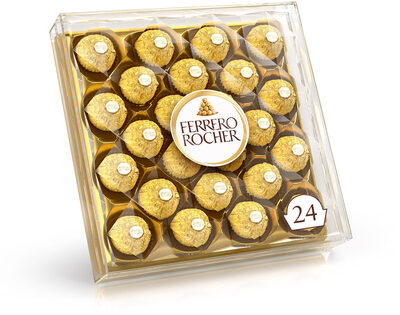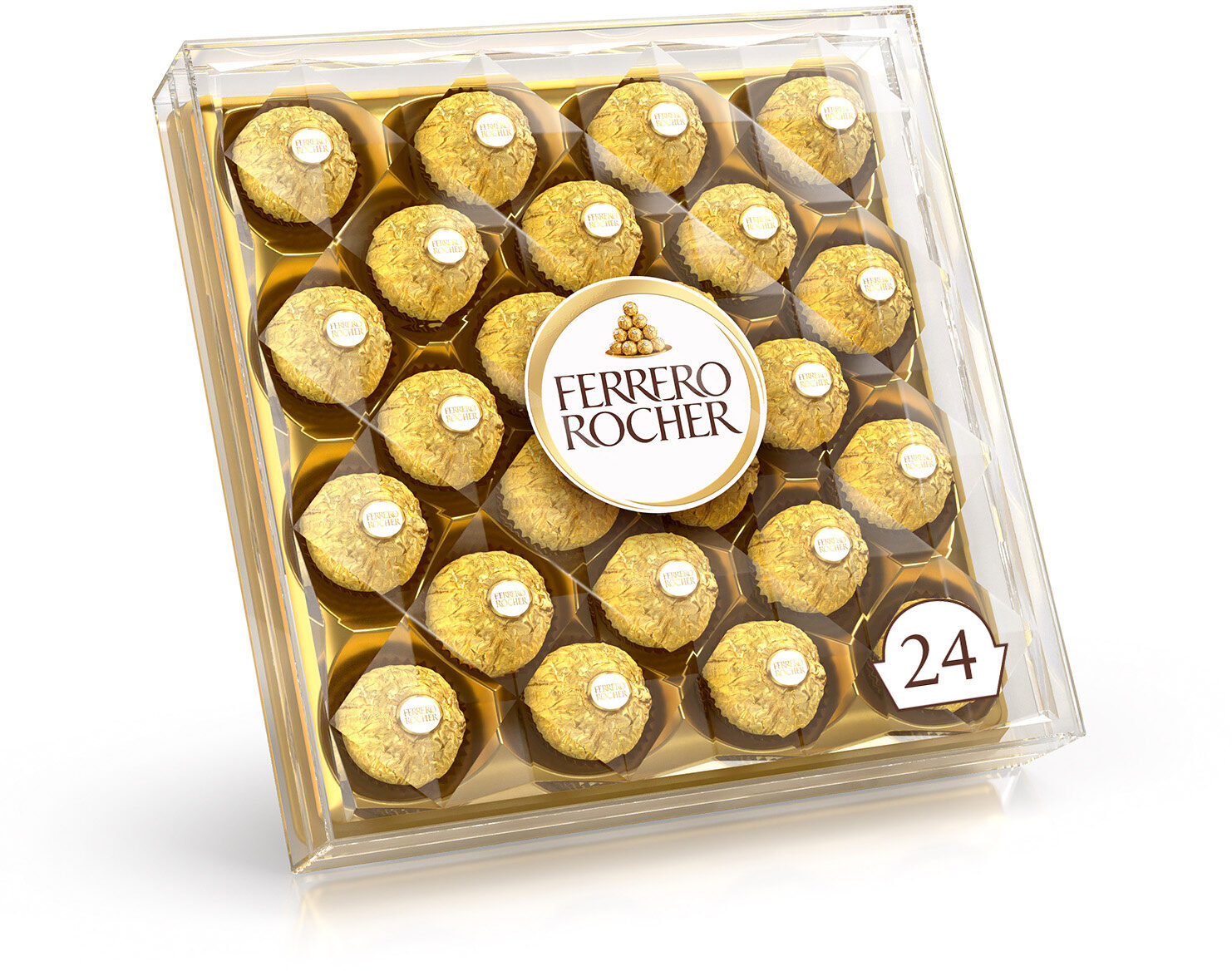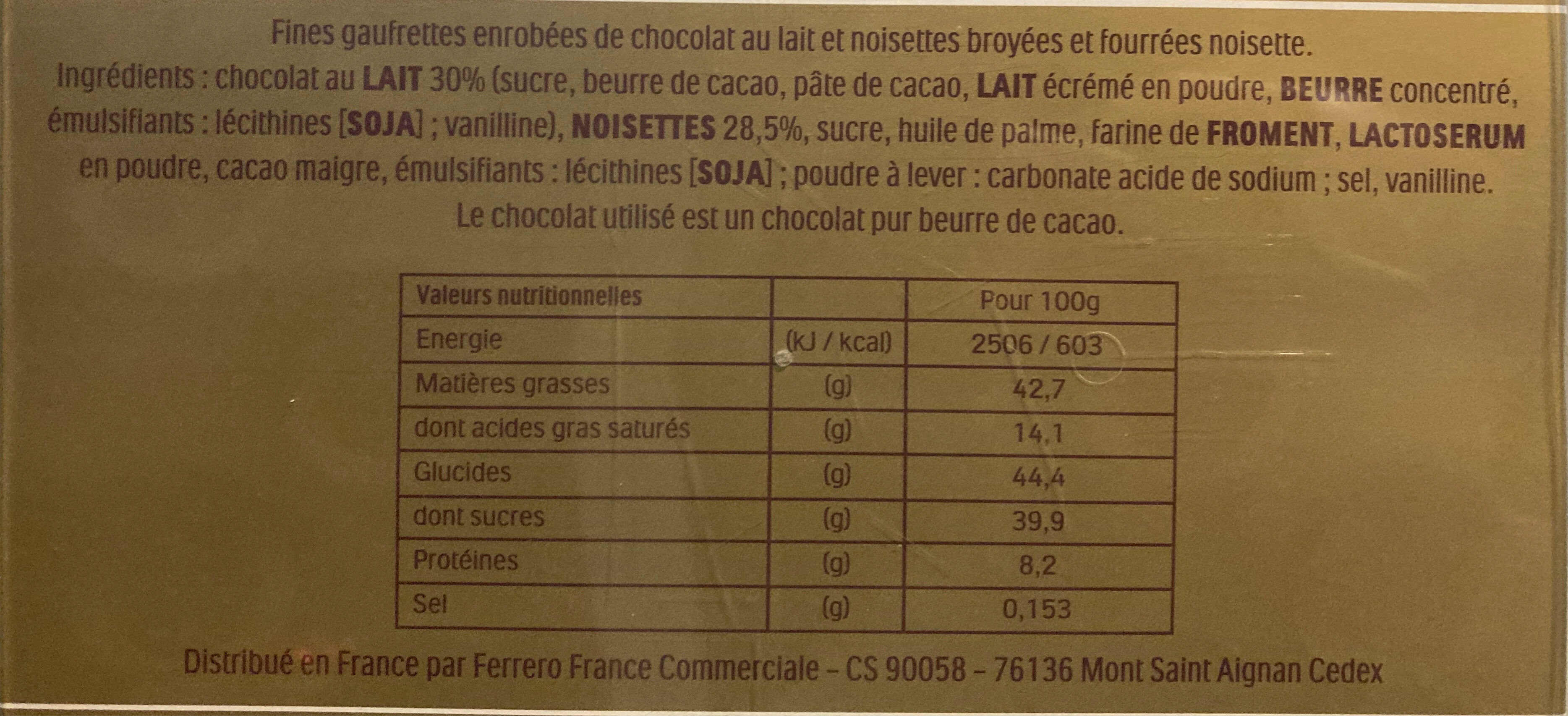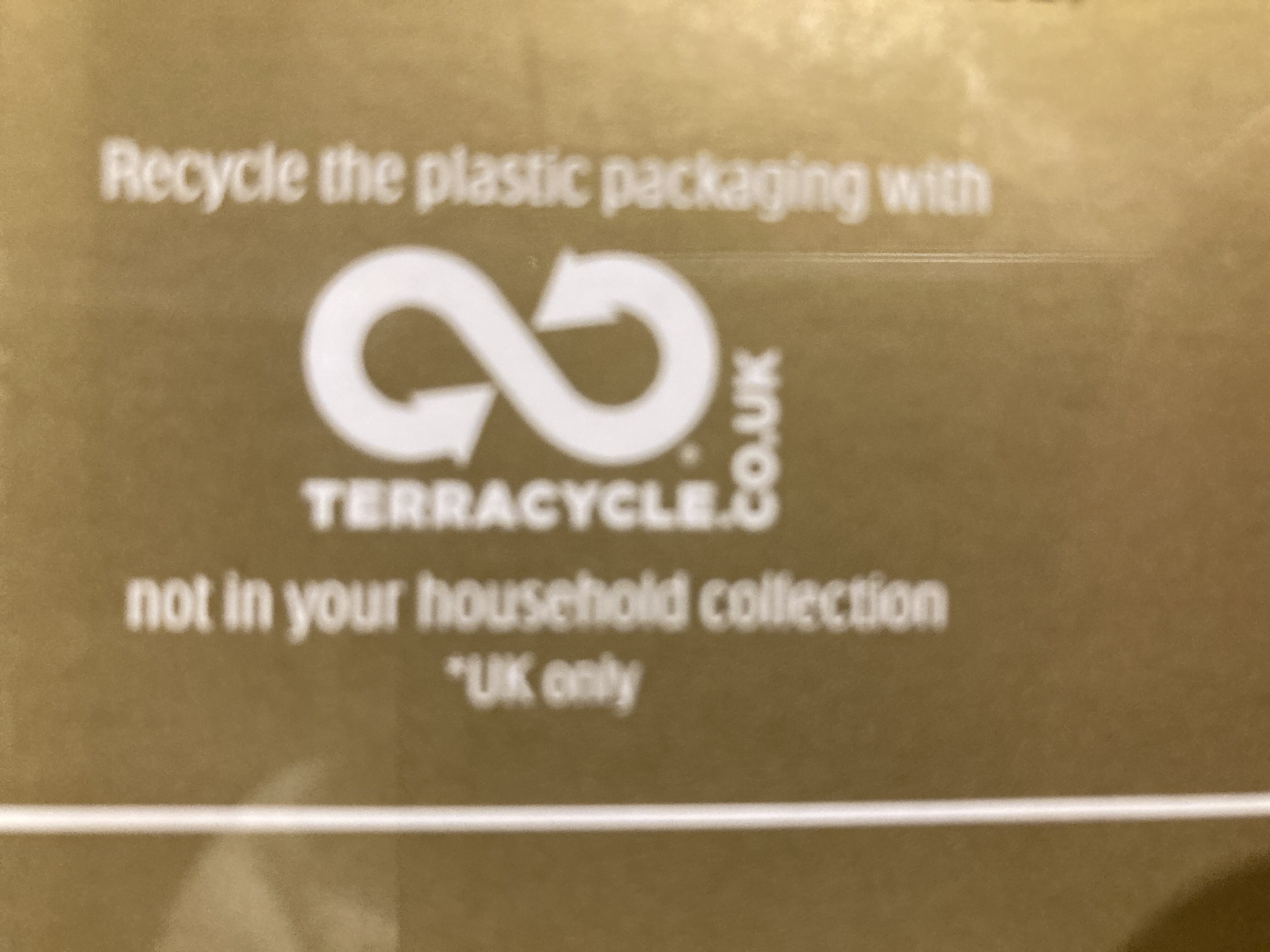Ferrero rocher - 300 g
This product page is not complete. You can help to complete it by editing it and adding more data from the photos we have, or by taking more photos using the app for Android or iPhone/iPad. Thank you!
×
Some of the data for this product has been provided directly by the manufacturer FERRERO FRANCE COMMERCIALE.
Barcode: 8000500009673 (EAN / EAN-13)
Common name: Fines gaufrettes enrobées de chocolat au lait et noisettes broyées et fourrées noisette.
Quantity: 300 g
Packaging: en:Plastic, en:Box, en:Other plastic-tub, en:Other plastic-unknown, en:Paper-sleeve, en:Ps-tub
Brands: Ferrero
Categories: en:Snacks, en:Sweet snacks, en:Cocoa and its products, en:Confectioneries, en:Festive foods, en:Chocolate candies, en:Christmas foods and drinks, en:Christmas chocolates
Labels, certifications, awards:
Halal, en:Green Dot

Link to the product page on the official site of the producer: http://www.ferrero.fr/ferrero-rocher
Stores: U
Countries where sold: Bulgàiria, An Fhraing, An Spàinn, An Rìoghachd Aonaichte
Matching with your preferences
Other information
Conservation conditions: A conserver au sec et à l'abri de la chaleur.
Customer service: FERRERO FRANCE COMMERCIALE - Service Consommateurs, CS 90058 - 76136 MONT SAINT AIGNAN Cedex
Report a problem
Data sources
The manufacturer FERRERO FRANCE COMMERCIALE uses Equadis to automatically transmit data and photos for its products.
Product added on by openfoodfacts-contributors
Last edit of product page on by org-ferrero-france-commerciale.
Product page also edited by alekslario, asmoth, benousey, desan, ecoscore-impact-estimator, ferrero, greensky, grumpf, ibwocoruytrc, inf, kaliuzunova, keragui, kiliweb, ln29, max079, moon-rabbit, nicolaaadr, nicolasleger, packbot, quechoisir, roto, scanbot, swipe-studio, tacite, telperion87, thaialagata, yuka.U0xzc1BaVWNoOTAxc013bHp6WDExY011NmNYMlZqT1FBYlF0SVE9PQ, yuka.WmZBZ0NaNDhyUFlOcHYxbCtTNkkvL1pseGNhbkJYMkdFdE0rSUE9PQ, yuka.sY2b0xO6T85zoF3NwEKvlhEaf8fGkAj8OTDWi0PXx_e8CrrtX9J16ZrYb6o, yuka.sY2b0xO6T85zoF3NwEKvlmZ_buHvqWLtDSzRyXy5m-elD6fyMe9x2KGiL6g, yuka.sY2b0xO6T85zoF3NwEKvlnJqDoD0ph35Fjrlom-b6O2od565Ps973tTbGKo.












